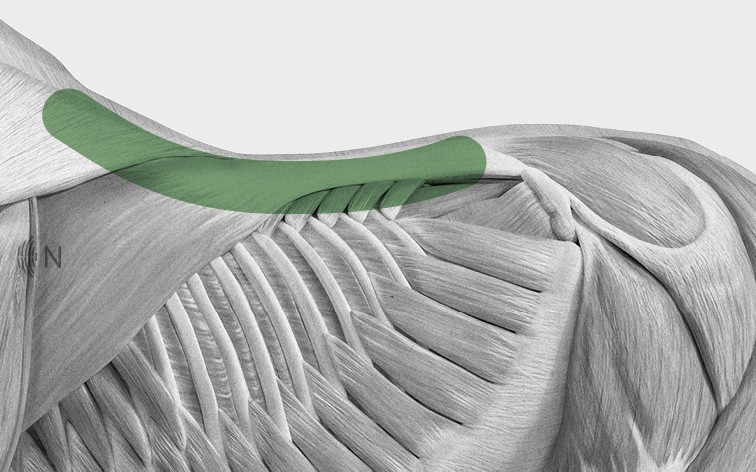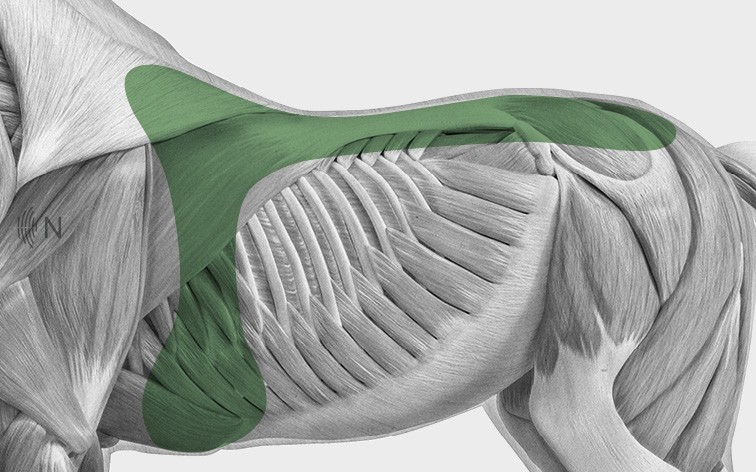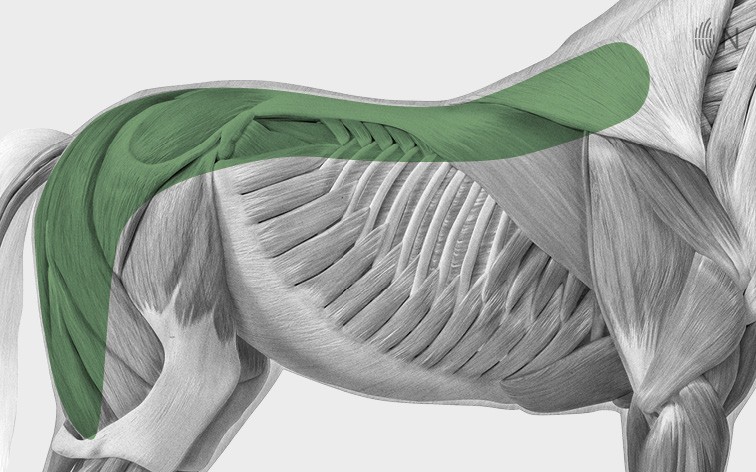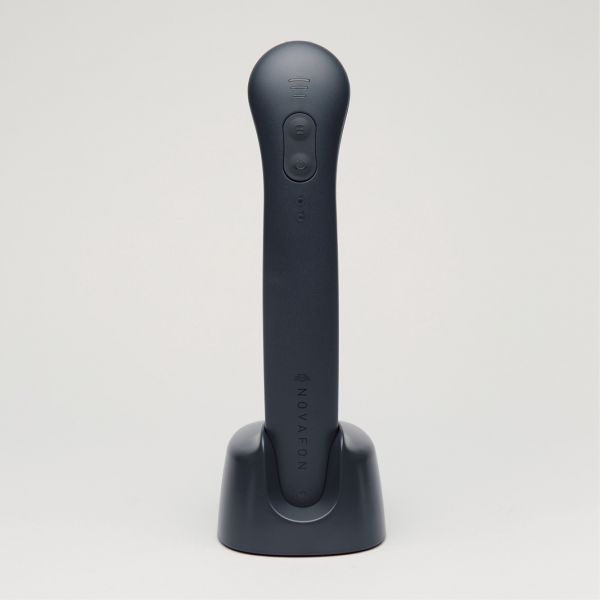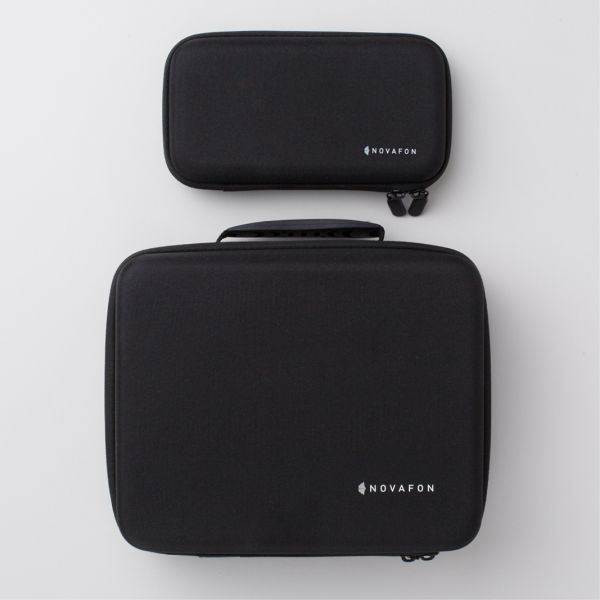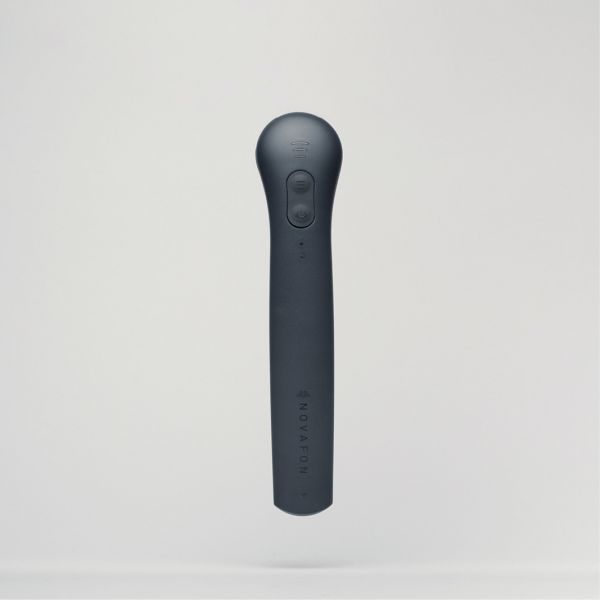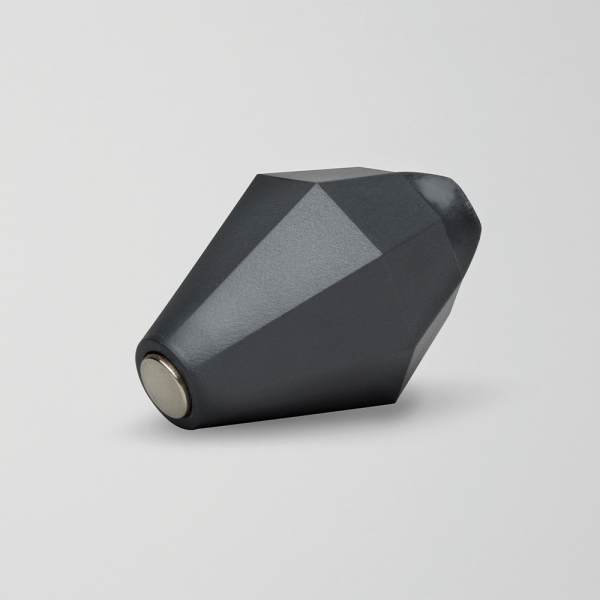Kissing Spines
The condition known as “kissing spines” refers to inflammation and changes in the vertebrae, mostly between the 10th thoracic vertebra and the 4th lumbar vertebra. Unfortunately for horses, this is exactly where the saddle is placed (9th to 18th thoracic vertebrae). “Kissing spines” means that the vertebrae are touching or overlapping. If the horse’s back muscles are not strong enough, the horse cannot arch its back, instead pushing it downwards. The result is that the vertebrae move closer together, and the resulting friction can cause pain. Problems of this nature lead to the horse becoming unrideable. With the right training plan, a well-fitting saddle and correct riding, you can slow the progression of the disease and continue to ride your horse.
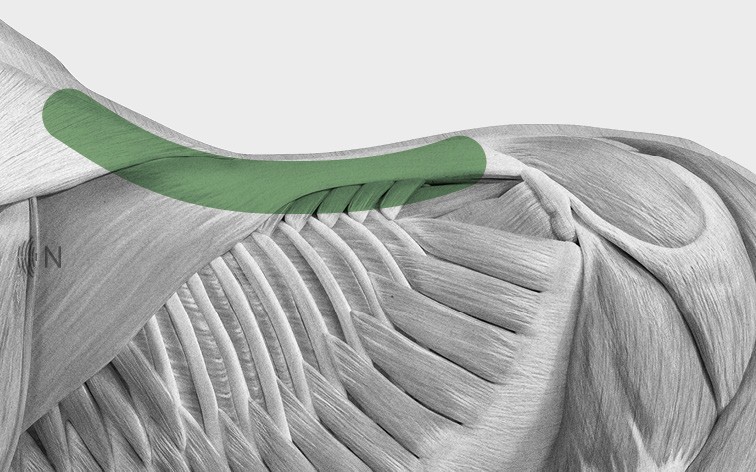
Behandlung mit dem NOVAFON
Neben dem Gelenk selbst spielen vor allem die zugehörige Muskulatur und die Triggerpunkte eine Rolle. Mit dem NOVAFON kann aber die gesamte Kaumuskulatur unterstützend behandelt werden, um die muskuläre Dysbalance auszugleichen und die Bewegungseinschränkungen zu reduzieren.
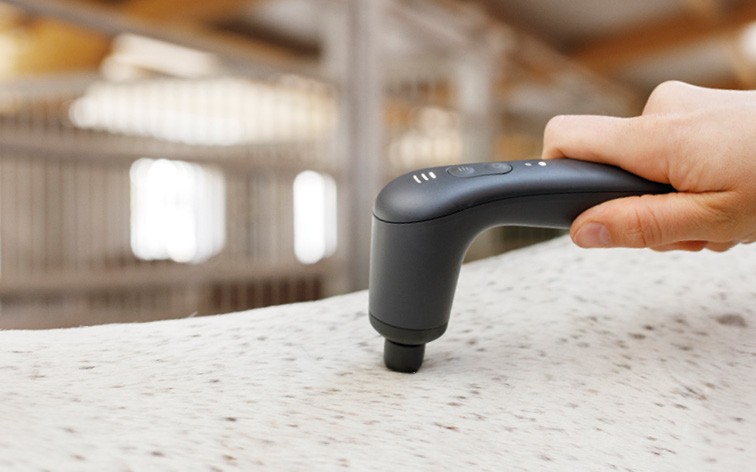
Treatment with NOVAFON
When treating “kissing spines”, it may be useful to include the back muscles too. Treatment with the NOVAFON should last a total of 10 – 15 minutes and can be repeated daily. The intensity setting should be individually adapted to each horse, as every horse perceives the vibration very differently. Always treat both sides.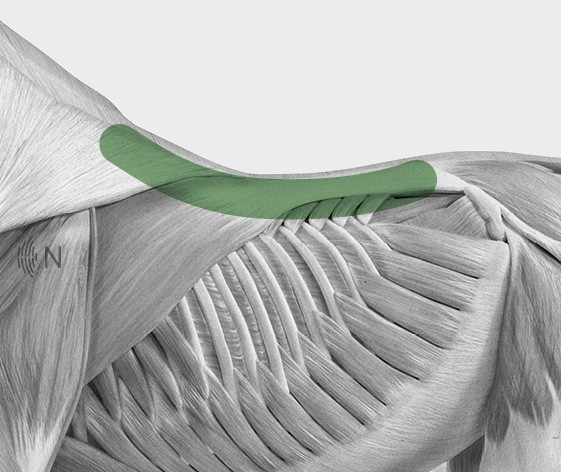
Kissing Spines
The condition known as “kissing spines” refers to inflammation and changes between the 10th thoracic vertebra and the 4th lumbar vertebra. Unfortunately for horses, this is exactly where the saddle is placed (9th to 18th thoracic vertebrae). “Kissing spines” means that the vertebrae are touching or overlapping. If the horse’s back muscles are not strong enough, the horse cannot arch its back, instead pushing it downwards. The result is that the vertebrae move closer together, and the resulting friction can cause pain.
Sensitivity in the saddle and girth area
Many horses are very sensitive to pain caused by pressure in the saddle area. From an anatomical point of view, horses (and especially horses that are not regularly ridden) have a smaller soft tissue layer in the area of the thoracic vertebrae and ribs than in the area of the lumbar spine. This means: the less muscle mass the horse has in the saddle area, the higher the risk of pain. Trying to get a horse fit too quickly can also favour these symptoms, as can inexperienced riders. Symptoms can vary widely. The most common symptoms include immediate reactions such as altered breathing, head shaking, kicking out, shying and snatching. When being ridden, the horse may be very tense, or may react when the girth is tightened.
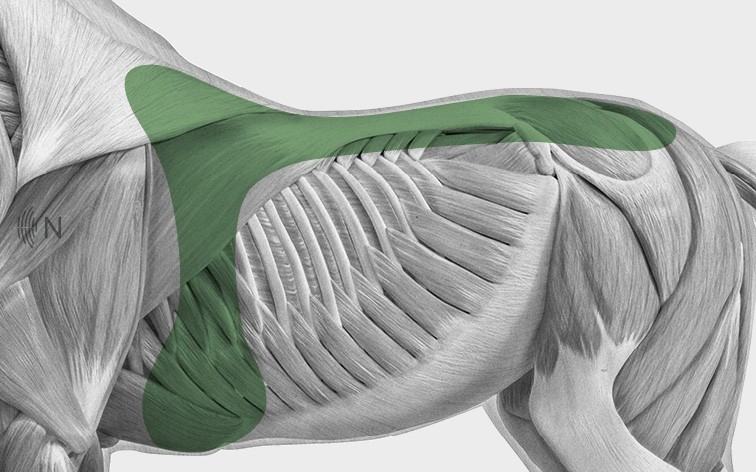
Behandlung mit dem NOVAFON
Neben dem Gelenk selbst spielen vor allem die zugehörige Muskulatur und die Triggerpunkte eine Rolle. Mit dem NOVAFON kann aber die gesamte Kaumuskulatur unterstützend behandelt werden, um die muskuläre Dysbalance auszugleichen und die Bewegungseinschränkungen zu reduzieren.
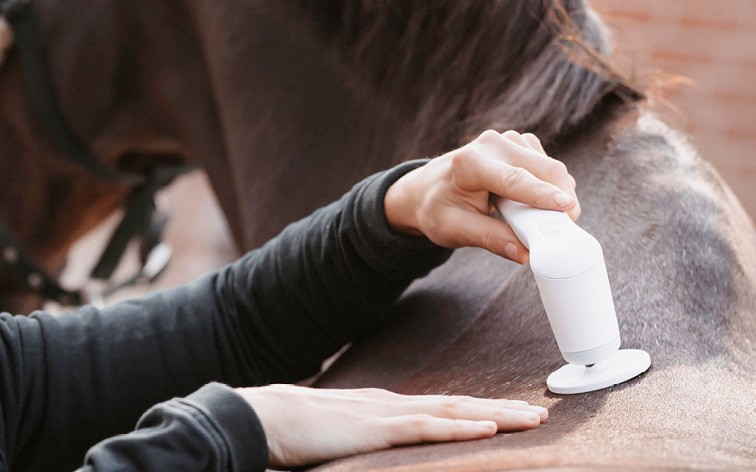
Treatment with NOVAFON
With the NOVAFON, the musculature of the entire back and girth area can be treated supportively in order to compensate for muscular imbalances and to relieve pain. Treatment with the NOVAFON should last a total of 10 –15 minutes and can be repeated daily. The intensity setting should be individually adapted to each horse, as every horse perceives the vibration very differently. Always treat both sides.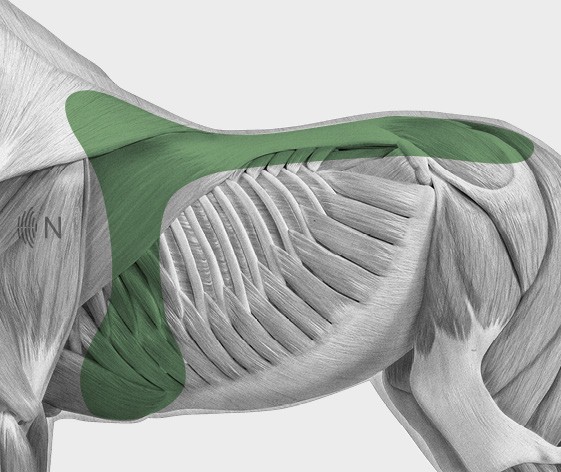
Sensitivity in the saddle and girth area
From an anatomical point of view, horses (and especially horses that are not regularly ridden) have a smaller soft tissue layer in the area of the thoracic vertebrae and ribs than in the area of the lumbar spine. This means: the less muscle mass the horse has in the saddle area, the higher the risk of pain. The most common symptoms include immediate reactions such as altered breathing, head shaking, kicking out, shying and snatching. When being ridden, the horse may be very tense, or may react when the girth is tightened.
Myofascial pain syndrome
It is important to know that not all back problems originate in the back, but can also stem from other locations. This is why it is important to look for the cause of the pain and not just treat the symptoms. Horses can react very differently to pain. You should look out for changes in behaviour such as unwillingness, taking off, drop in performance, ears laid back, snatching when being saddled and general disobedience. If the back problems are of a purely muscular nature, you can get them under control with the right therapy and the right training plan, enabling your horse to regain its normal resilience.
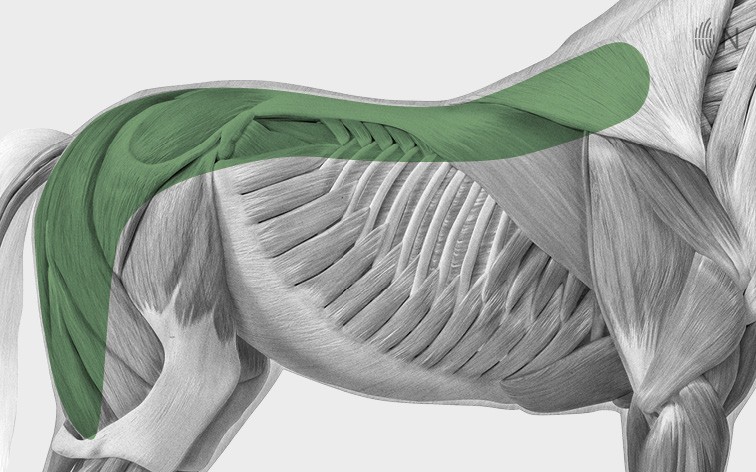
Behandlung mit dem NOVAFON
Neben dem Gelenk selbst spielen vor allem die zugehörige Muskulatur und die Triggerpunkte eine Rolle. Mit dem NOVAFON kann aber die gesamte Kaumuskulatur unterstützend behandelt werden, um die muskuläre Dysbalance auszugleichen und die Bewegungseinschränkungen zu reduzieren.
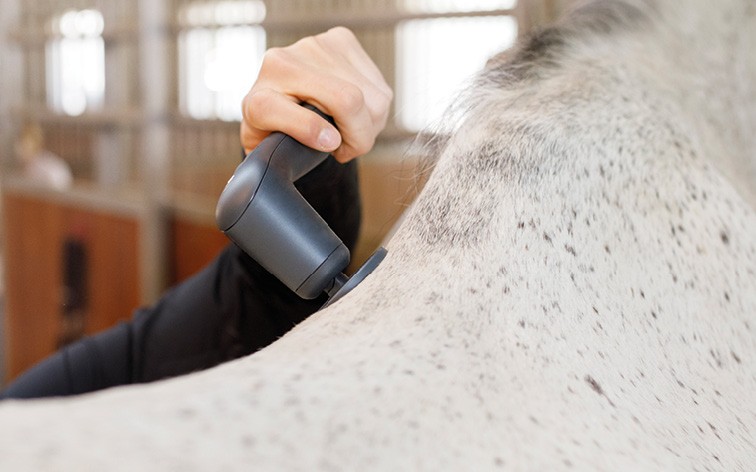
Treatment with NOVAFON
With the NOVAFON, the entire back musculature can be treated supportively. Treatment with the NOVAFON should last a total of 10 – 15 minutes and can be repeated daily. The intensity setting should be individually adapted to each horse, as every horse perceives the vibration very differently. Always treat both sides.
Myofascial pain syndrome
Not all back problems originate in the back, but can also stem from other locations. This is why it is important to look for the cause of the pain and not just treat the symptoms. You should look out for changes in behaviour of the horse such as unwillingness, taking off, drop in performance, ears laid back, snatching when being saddled and general disobedience. If the back problems are of a purely muscular nature, you can get them under control with the right therapy and the right training plan, enabling your horse to regain its normal resilience.
Step 1 — Stroking the back muscles
In the first step, set the device to vibration level 1 and use the disc attachment on the marked area. You can work in either a stroking or continuous circular motion in order to strengthen the muscles. The direction of treatment plays a subordi-nate role – pay more attention to whether the horse is relaxed and is allowing its muscles to relax. Depending on the condition of the coat, it is recommended that you work in the direction of the coat growth. Treat each side of the face for 2 to 3 minutes..
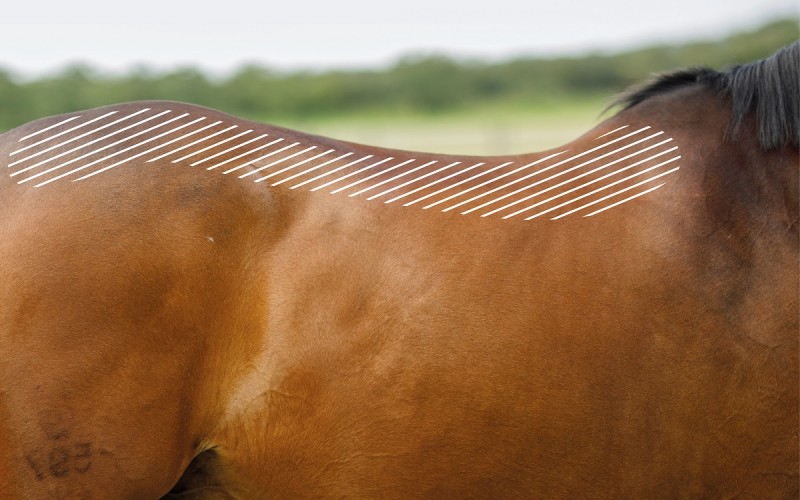
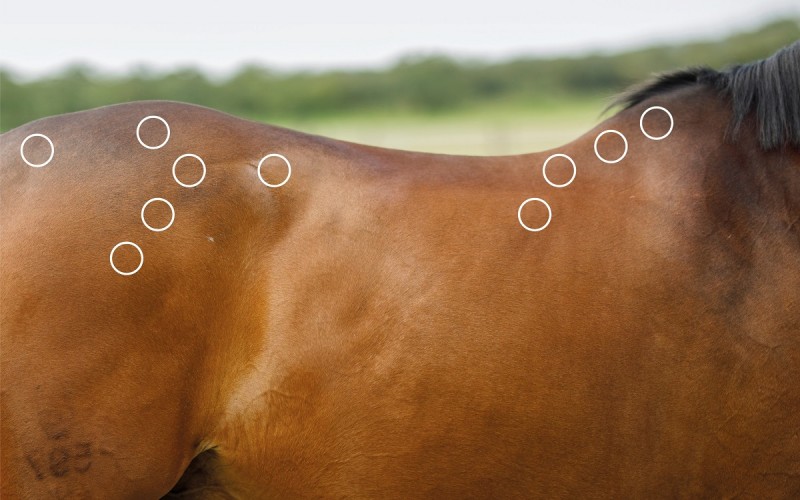
Step 2 — Treatment of stress points
Use the ball attachment to work directly on the trigger points. It is best to feel for the trigger points with your fingertips at the marked areas. To treat these areas, connect the ball attachment, select Level 2, and adjust the intensity accordingly. Treat the trigger points for about 1 to 2 minutes each, either by applying light pressure without moving or in small circular movements. After this, treat the next sore area.
Step 1 — Stroking the back muscles
In the first step, set the device to vibration level 2 and use the disc attachment on the marked area. You can work in either a stroking or continuous circular motion. The direction of treatment plays a subordinate role – pay more attention to whether the horse is relaxed and is allowing its muscles to relax. Depending on the condition of the coat, it is recommended that you work in the direction of the coat growth. Treat each side of the face for 2 to 3 minutes
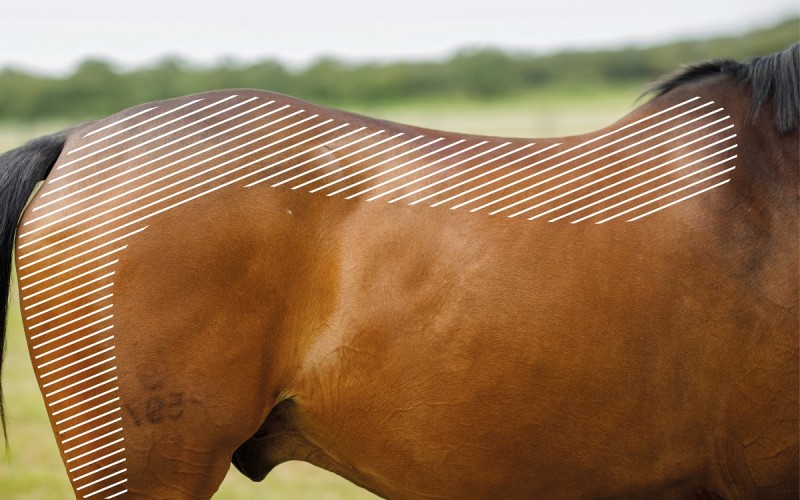

Step 2 — Treatment of stress points
Use the ball attachment to work directly on the trigger points. It is best to feel for the trigger points with your fingertips at the marked areas. To treat these areas, connect the ball attachment, select Level 2, and adjust the intensity accordingly. Treat the trigger points for about 1 to 2 minutes each, either by applying light pressure without moving or in small circular movements. After this, treat the next sore area.
Step 1 — Stroking the back muscles
In the first step, set the device to vibration level 2 and use the disc attachment on the marked area. You can work in either a stroking or continuo us circular motion. The direction of treatment plays a subordinate role – pay more attention to whether the horse is relaxed and is allowing its muscles to relax. Depending on the condition of the coat, it is recommended that you work in the direction of the coat growth. Treat each side for 2 to 3 minutes.
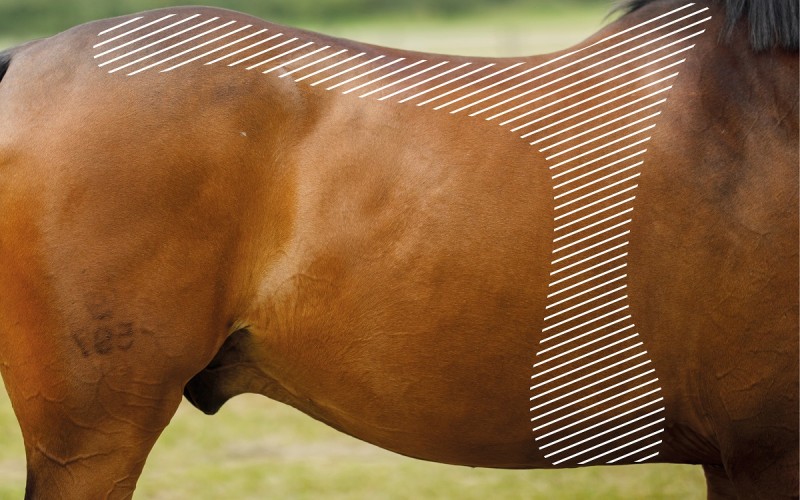
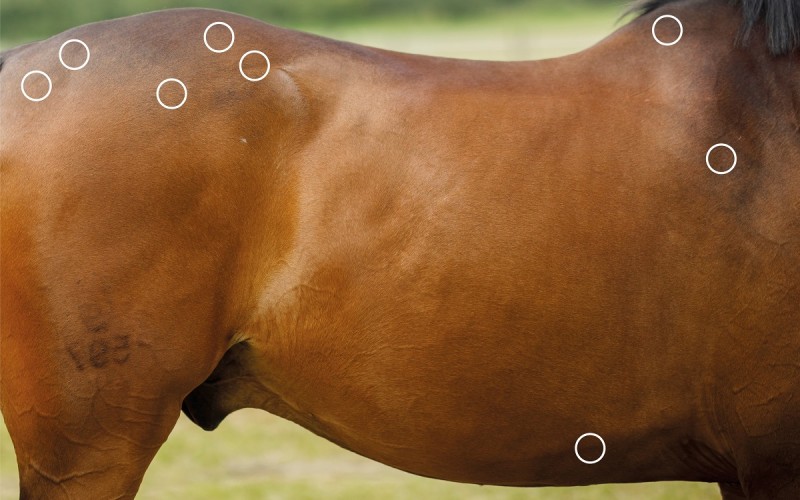
Step 2 — Treatment of stress points
Use the ball attachment to work directly on the trigger points. It is best to feel for the trigger points with your fingertips at the marked areas. To tre at these areas, connect the ball attachment, select Level 2, and adjust the intensity accordingly. Treat the trigger points for about 1 to 2 minutes each, either by applying light pressure without moving or in small circular movements. After this, treat the next sore area.

In der Anwendung einfach und angenehm. Ich habe bisher die besonders beanspruchte Kiefermuskulatur behandelt (Zähne-Knirsch-Problematik). Sehr angenehm und entspannend! (...) Ich nutze es regelmäßig und gern! 1, 2 Anwenderin S., 15.02.2017, NOVAFON power
Device recommendation
Product
recommendation
Full package
Accessory recommendation
Full
package
Where can I find further information?
Read more information online or contact us.

